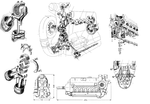Readie
Chief Master Sergeant
I'm still not fully comprehending the reasoning to invert the engine, as it does seem to produce more issues than an upright installation, and offers little if any realistic advantage?
Join the club, neither do I and I have to say that I'm not been convinced by the points on this thread.
Cheers
John

